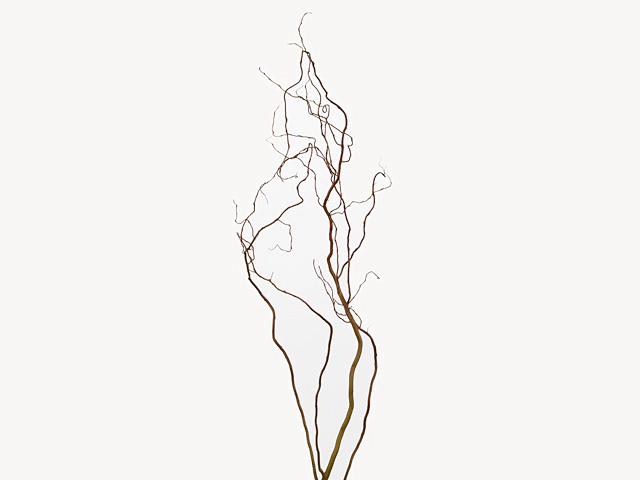Salix alba 'Dart's Snake'

| Leaf type | Foliage leaf |
| Winter hardness | Excellent (USDA-zone 1,2,3,4) |
| Inflorescence | Catkin |
| Structure (tissues) | Woody |
| Light conditions | Sunny |
| Leaf division | Simple |
| Plant, growth type | Erect |
| Toxicity (if consumed) | Not or barely |
| Moisture requirements | Wet; Moist |
| Soil type | Clayish |
The Salix alba 'Dart's Snake', commonly known as the Willow or White Willow, is a fascinating plant species that possesses several interesting characteristics. This article will delve into the various aspects of this plant, ranging from its leaf type and winter hardness to its growth type and soil requirements.
One striking feature of the Salix alba 'Dart's Snake' is its foliage leaf type. It possesses simple leaf divisions, which means that its leaves are not divided into smaller leaflets. Instead, the leaves retain a singular, uniform structure. This unique characteristic adds to the plant's distinct appearance.
Another noteworthy quality of the Salix alba 'Dart's Snake' is its excellent winter hardness. This plant can withstand harsh winter conditions, making it suitable for regions with USDA hardiness zones 1, 2, 3, and 4. Gardeners in these areas can feel confident knowing that this plant will endure even the harshest winter weather.
When it comes to flowering, the Salix alba 'Dart's Snake' produces inflorescences in the form of catkins. These elongated clusters of flowers give the plant a charming aesthetic during the flowering season. The catkins add depth and visual interest to the overall appearance of the plant.
In terms of its structure, the Salix alba 'Dart's Snake' is classified as a woody plant. This means that its tissues are composed of wood, giving the plant stability and strength. The woody structure enables the plant to endure various weather conditions and thrive in different environments.
To thrive, the Salix alba 'Dart's Snake' requires sunny light conditions. This plant flourishes when exposed to ample sunlight, so it is best suited for areas with good exposure to the sun. Adequate sunlight allows the plant to photosynthesize efficiently and promotes optimal growth.
In terms of toxicity, the Salix alba 'Dart's Snake' is relatively safe. This plant is not or barely toxic if consumed. However, it is always advisable to exercise caution and keep plants out of reach of children and pets.
Moisture requirements play a vital role in the growth of the Salix alba 'Dart's Snake'. This plant thrives in wet to moist conditions. Its roots require a constant supply of water, making it suitable for areas with higher levels of moisture.
When it comes to soil type, the Salix alba 'Dart's Snake' prefers clayish soil. This type of soil retains moisture well, particularly useful for a plant that requires wet to moist conditions. Gardeners can ensure optimal growth by providing the plant with a suitable clayish soil environment.
In conclusion, the Salix alba 'Dart's Snake' is an intriguing plant species with several noteworthy characteristics. From its simple leaf divisions and excellent winter hardness to its catkin inflorescences and woody structure, this plant offers a unique visual appeal. As a lover of sunlight, a relatively low toxicity level, and a preference for wet to moist, clayish soil, the Salix alba 'Dart's Snake' is an excellent addition to gardens and landscapes in suitable regions.
Market availability index by month:
| Jan. | Feb. | Mar. | Apr. | May | Jun. | Jul. | Aug. | Sep. | Oct. | Nov. | Dec. |
|---|---|---|---|---|---|---|---|---|---|---|---|
| 3 | 3 | 4 | 3 | 1 | 1 | 1 | 1 | 2 | 3 | 3 | 3 |